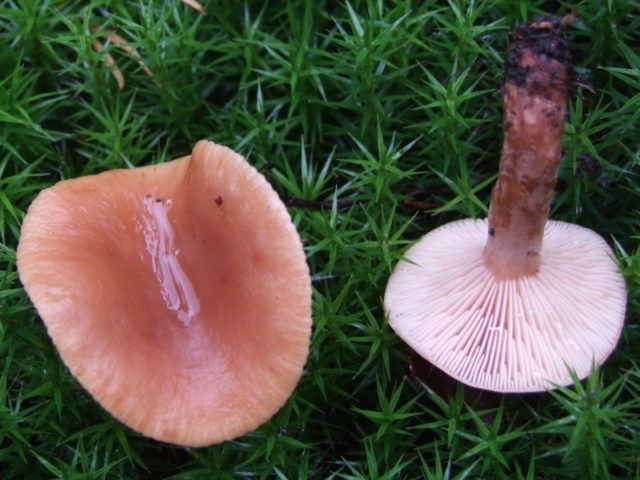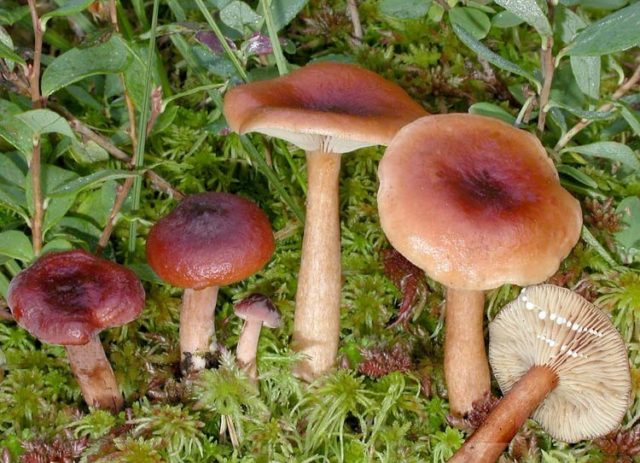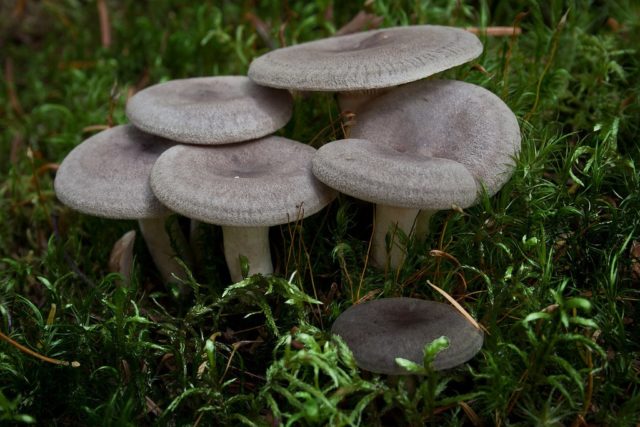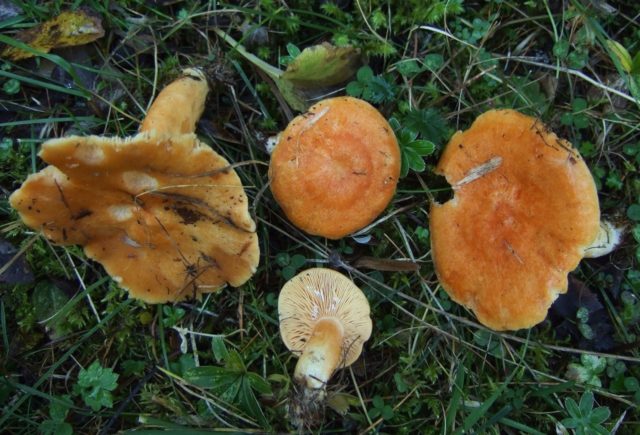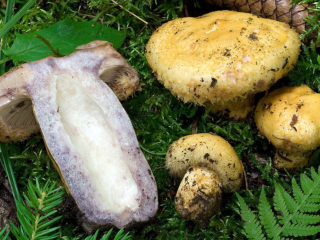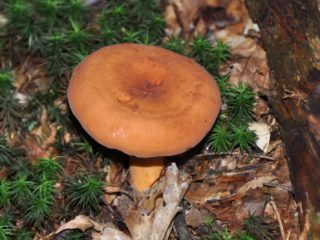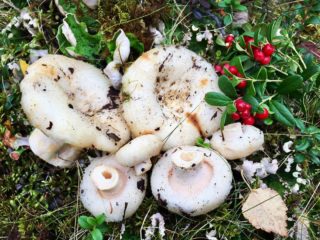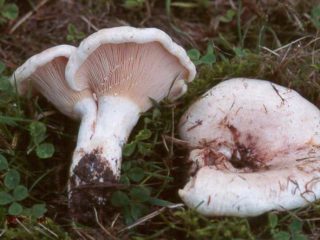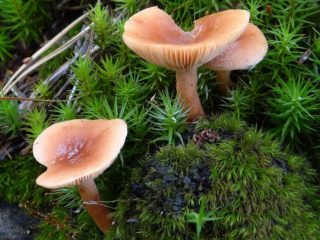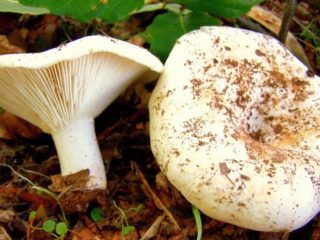Content
Marsh milk mushroom is an edible agaric mushroom. A representative of the Russula family, the genus Mlechniki. Latin name: Lactarius sphagneti.
Description of the marsh milk mushroom
The fruiting bodies of the species are not too large. They are distinguished by a noticeable bright color, not very characteristic of milk mushrooms.
Description of the cap
Cap width up to 55 mm. It appears convex, later opens, with a depression in the center, sometimes transforming into a funnel. Other characteristics:
- in the center there is a protruding tubercle;
- in young specimens the border is smooth, folded, and later descends;
- the skin is slightly wrinkled;
- color is chestnut, brownish-reddish to terracotta and ocher tones;
- the top becomes lighter with age.
Below there are narrow, densely spaced plates that descend towards the stem. The lamellar layer and spore powder are reddish.
The marsh species has creamy white flesh.Under the skin it is light brown, the bottom on the stem is darker. When broken, whitish juice emerges, which immediately darkens to yellow-gray.
Description of the leg
Leg height up to 70 mm, width up to 10 mm, dense, hollow with age, pubescent at the ground. The surface color matches the color of the cap or is lighter.
Where and how does it grow
Swamp milk mushrooms grow in the forest zone of a temperate climate, in lowlands covered with moss, under birch, pine and linden trees. The species is distributed in the Belarusian and Volga forests, in the Urals and in the West Siberian taiga. The mycelium is rarely seen, the family is large. Collected from June or August to September-October, depending on the area.
Is the mushroom edible or not?
Small reddish mushrooms are edible. In terms of nutritional value they belong to category 3 or 4.
How to cook marsh milk mushrooms
The collected mushrooms are placed in water and soaked to extract the bitter juice for 6-60 hours. Then they salt or marinate. Sometimes, after soaking, the fruiting bodies are boiled for half an hour and hot salted or fried.
Cooking rules:
- the first water is poured out with bitterness, new water is poured in and finished cooking;
- when soaking in the morning and evening, change the water;
- salted fruit bodies will be ready in 7 or 15-30 days, depending on the salt concentration.
Doubles and their differences
Conditionally edible, it looks like a marsh milk mushroom breast papillary, it is slightly larger, with a head up to 90 mm. The skin color is brown, mixed with grey, bluish or purple tones. The height of the whitish leg is up to 75 mm. The species grows in forests on sandy soils.
Inedible double - milky orange, which is considered poisonous by some scientists.The toxins are not strong enough to cause much harm to health, but they do cause gastrointestinal upset. The cap of the orange milkweed is 70 mm wide, convex when young, then depressed. The color of the smooth, slippery skin is orange. The leg is the same in tone. Laticaria grow in deciduous forests from mid-summer.
Conclusion
Marsh milk mushrooms are collected during a quiet hunt for pickling; the mushrooms are soaked before cooking. The species is rare, but prized by mushroom lovers.

